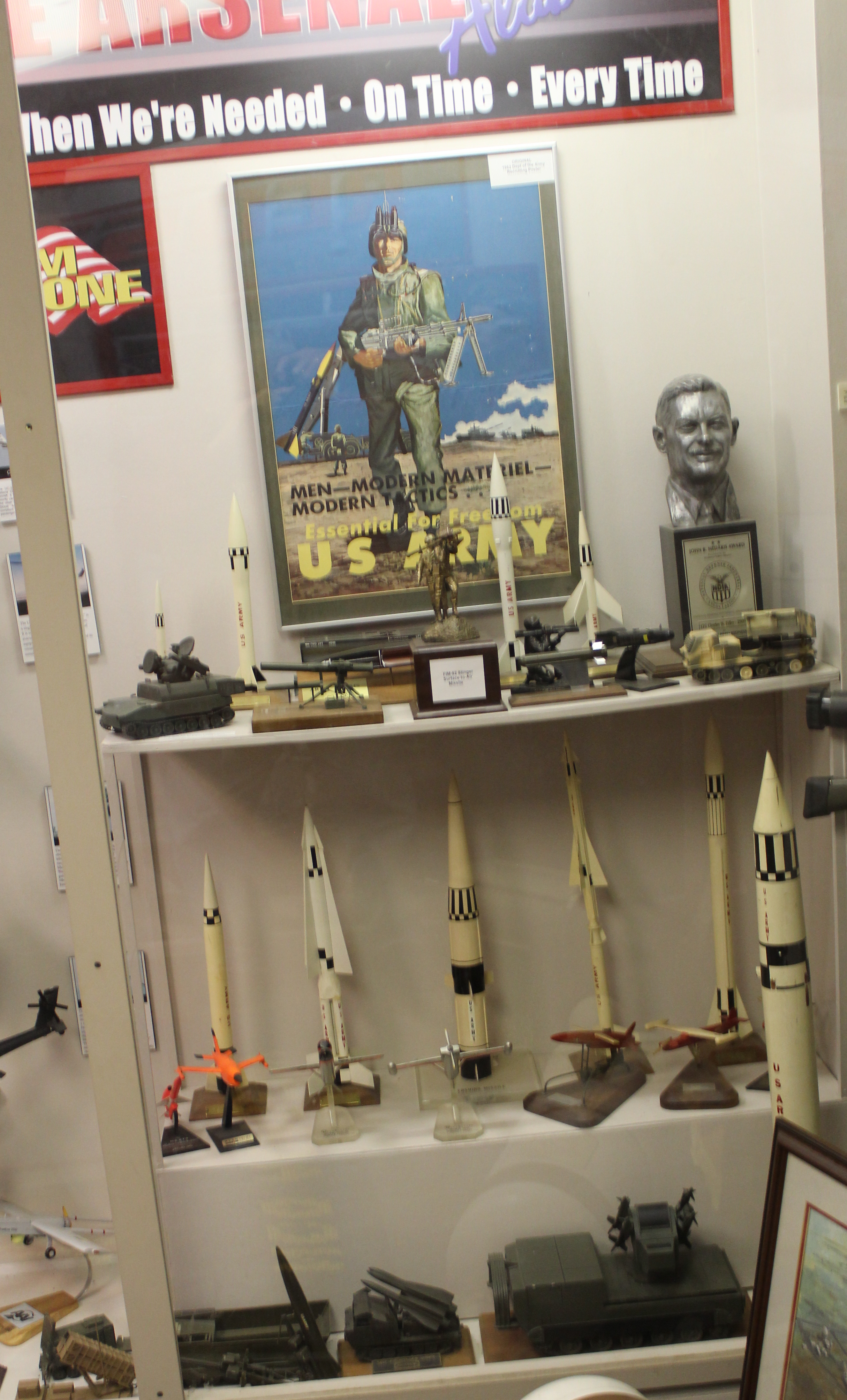Hellfire Modular Missile
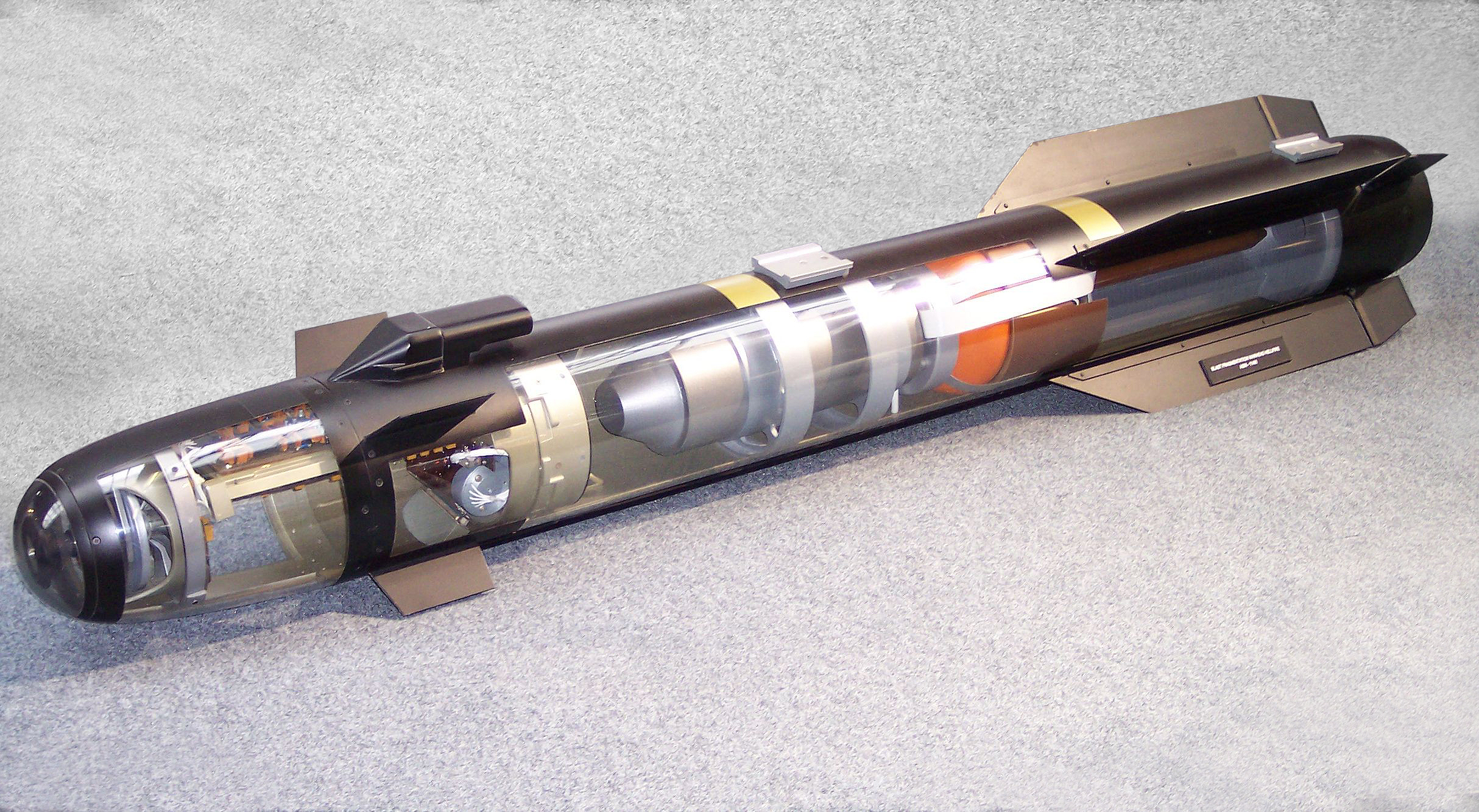
The AGM-114 Hellfire Missile is an air-to surface missile originally developed for anti-armor use. Initial development began in 1974. The Hellfire has evolved into a multi-mission multi-target missile that can be launched from multiple air sea and ground platforms. The Hellfire Missile is the primary 100 pound class air-to-ground precision weapon for the US and many other nations. It is also deployed on surface platforms for surface-to-surface and surface-to-air roles. The Hellfire was introduced into service in 1984 and remains in use currently.
LaCrosse Missile
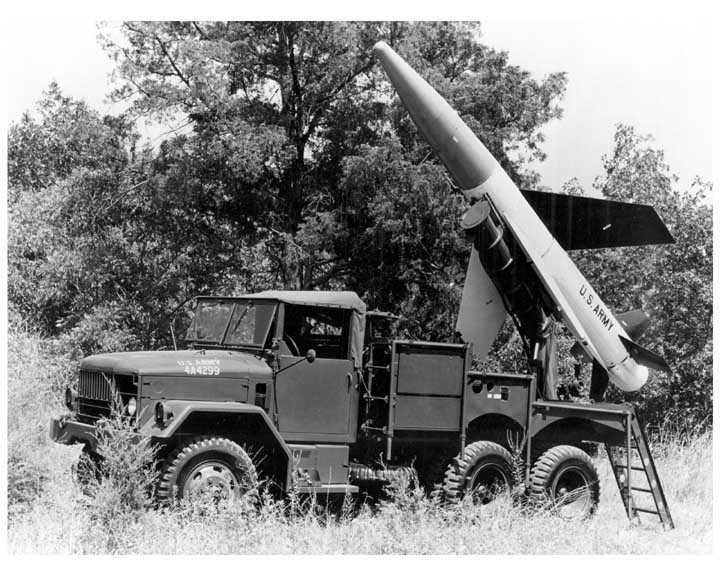
The MGM-18 Lacrosse was a short range tactical missile designed to provide close support for ground troops. The Lacrosse was intended to supplement field artillery. The missile was initially designed by John Hopkins University and Cornell Aeronautical Laboratory in 1947. The principal concept of the missile was to launch it with preset guidance parameters and then during flight control would switch over to a forward observer. This relay process is somewhat similar to the game Lacrosse. The Lacrosse system was complex and cumbersome. It required three trucks and a jeep, radar and a missile guidance system and a generator. Nearly 1,200 were produced. The LaCrosse Missile was withdrawn from service in 1964.
NV-105 Chukar Turbojet Target Drone

The NV-105 is a series of aerial target drones designed to be remote controlled and recoverable. The NV-105 is powered by a single Turbojet engine and launched from a zero length launcher using jet assisted takeoff propulsion. The NV-105 can also be launched by aircraft such as the Gruman Gulfstream or DC-130. The NV-105 serves as a realistic target for gunnery and missile training. The Chukar was introduced into service in 1968. Several variants have been developed. The most modern, the BQM-74E is still in service.
Self Propelled Hawk Missile

The Hawk "Homing All The Way Killer" is an American made medium range surface to air missile produced by Raytheon. It's smaller size and greater mobility was designed to compliment the capabilities of the Nike Hercules. The Hawk entered service in 1959 and is still used by many countries around the world. Since its introduction, the Hawk has received many upgrades to increase its effectiveness. A complete Hawk battery is composed of several vehicles, generators, radar and control systems. The missile weighs about 1,300 pounds and carries a 120 pound warhead. It is propelled by a solid fuel rocket engine and has a maximum speed of Mach 2.4. The Hawk was replaced by the Patriot Missile in 1994. The Hawk was never used in combat by the US forces but it has been used by many other countries in conflicts around the world including the Middle East. Hawk missiles were sold to Iran during the Iran Contra deal. During the Iran-Iraq War, Iran shot down 40 Iraqi aircraft with Hawk missiles.
Chaparral Air Defense System

The M48 Chaparral is an American made self propelled surface to air missile system. The M113 chassis serves as a mobile platform for the missile.The Chaparral was introduced into service in 1969. The launching system for the Chaparral was capable of 360 degree traverse and +90 degree elevation. A Chaparral Missile System required a 30 HP diesel power unit and a cryonic cooling unit for the missile seekers. FLIR was added in 1984 to provide all weather and night capability. The Chaparral was removed from service in 1998. Each missile cost about $80,000.
Nike Hercules Missile
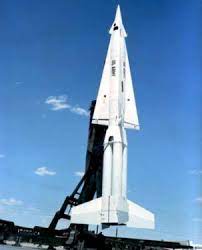
The Nike Hercules was a command guided long range high altitude anti-aircraft missile usually deployed at a fixed installation. These usually consisted of underground storage areas, an elevator to lift missiles, search and tracking radars, and housing for the crew. The Hercules missile was 41 ft long and had a wingspan of 6 ft. The Hercules was originally designed to carry a nuclear warhead to compensate for its relatively low resolution targeting radar. About 25 thousand were manufactured. In addition to its surface to air role, the Hercules could also operate as a surface to surface missile. The Nike Hercules was the primary heavy surface to air missile for US and NATO forces until it was replaced by the Patriot in the 1980's. These were deactivated and removed from service in 1988 without ever being used in combat.
Pershing Missile
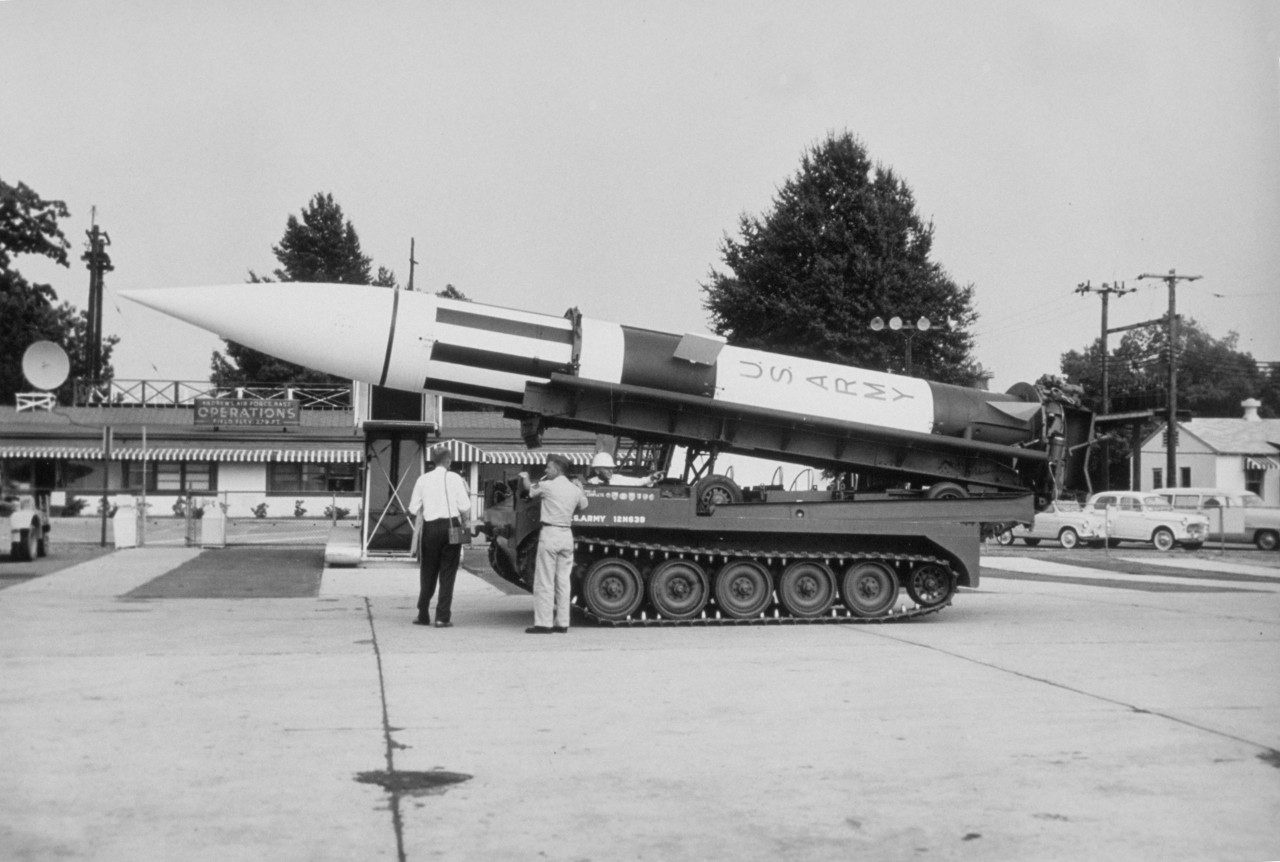
The first version of the Pershing Missile was introduced into service in 1962 and was designed to serve as primary deterrent against Soviet threats against NATO. The missile was mounted on a tracked vehicle and required three other vehicles to carry its radar and command equipment. The Pershing is a solid fueled two-stage theater ballistic missile. It is powered by two Thiokol rocket motors and used an analog computer for flight control. Jet vanes in the rocket motor nozzles steered the missile. The Pershing could carry conventional or nuclear warheads. The Pershing employed a simpler system than its predecessor, the Redstone Rocket which required twenty support vehicles. For operation, the missile was positioned on a pre-surveyed site using theodolites. The missile then oriented to north by an operator using a horizontal laying theodolite aimed at a window in the guidance section of the missile. Using a control box, the ST-120 inertial navigation system in the guidance section rotated into alignment and the north direction programmed into the computer. The Pershing was manufactured by Martin-Marietta. About 750 of these were built. The Pershing had an operational range of 460 miles and a maximum speed of Mach 8. Pershing missiles were withdrawn from service in 1991.
Model 1025 Missile Target Drone

The Model 1025 Missile Target was a target drone developed by Raytheon for gunnery and air-to-air combat training. The first version was produced in 1955 and was used by the US Army and Navy. It can tow banners or targets of its own, with two targets under each wing, and also carries scoring devices. it is a high-wing monoplane with a V-tail and is controlled remotely by radio. The vehicle has a McCulloch J six-cylinder, two-cycle, super-charged, internal combustion engine which develops 120 BHP at 4100 rpm at sea level, to drive a two-blade, variable-pitch, constant speed propeller. The Model 1025 had a maximum speed of 560 km per hour, a range of 400 km and a flight duration of 1 hour. A total of 2200 of these were built. One example of the aircraft is on display at the USS Alabama Battleship Memorial Park in Mobile, Alabama.
US Army Sergeant Missile System
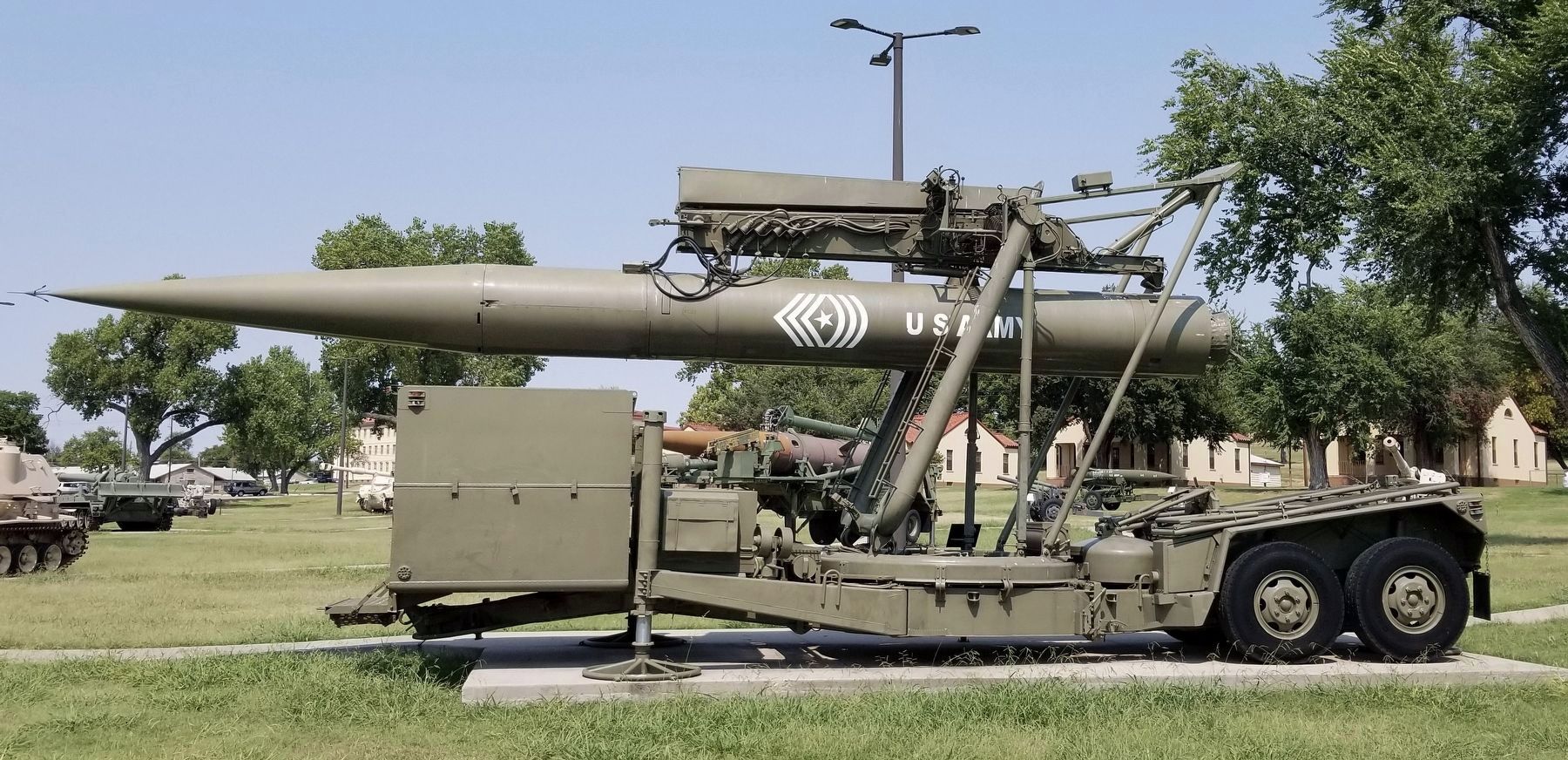
The MGM-29 Sergeant was an early short range surface to surface missile system developed by the Jet Propulsion Laboratory in 1955. The Sergeant was faster to deploy and utilized a more simple design than it predecessor, the Corporal. The Sergeant was designed to carry the W-52 nuclear warhead. The Sergeant was activated in 1962 and was eventually deployed to Europe, South Korea, and Germany. The Sergeant had a range of 75 miles and was powered by a solid fueled rocket motor made by Thiokol at Redstone Arsenal. The Sergeant Missile System was withdrawn from service in 1977.
MQM-42 Redhead Target Drone
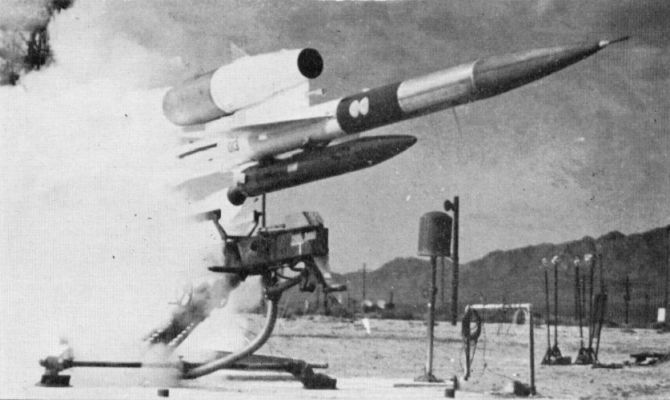
The MQM-42 Redhead was an aerial target drone developed by North American Rockwell in 1961. The fuselage was fitted with small delta wings, a downswept tailplane and a vertical stabilizer that also supported the ramjet engine. The Redhead was propelled into flight using a solid fueled rocket motor and was then powered by the ramjet engine. Two variants of the aircraft existed, the Redhead which was designed for high altitude flight, and the Roadrunner which was a low altitude version. Both were able to fly using an auto-pilot or ground control. Recovery was possible using a parachute. These were used primarily for training of Hawk Missile crews and remained in service until the mid 1970s.
Ryan Firebee Target Drone
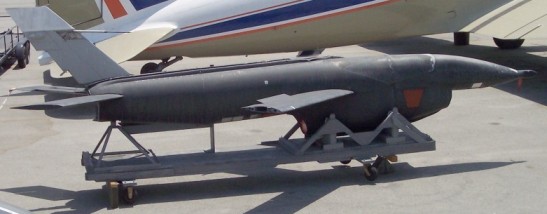
The Ryan Firebee is a target drone developed by Ryan Aeronautical Company in 1951. The Firebee was one of the first jet-propelled drones produced. The Firebee could be launched by specially modified aircraft or a ground based launch system. In the 1970's, the Firebee was used as an aerial target for the FIM-92 Stinger. The Firebee underwent revisions and upgrades throughout the 80's and 90's. The BQM-94 was used to lay chaff corridors during the 2003 invasion of Iraq.
Roland Air Defense Missile System
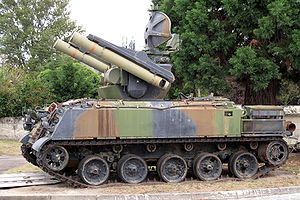
The Roland is a surface to air missile system SAM developed by France and Germany that was purchased by the US Army. It is a short range low-level missile intended to protect mobile field formations and fixed installations such as airfields. The Roland was first successfully tested in 1968.
Little John Missile
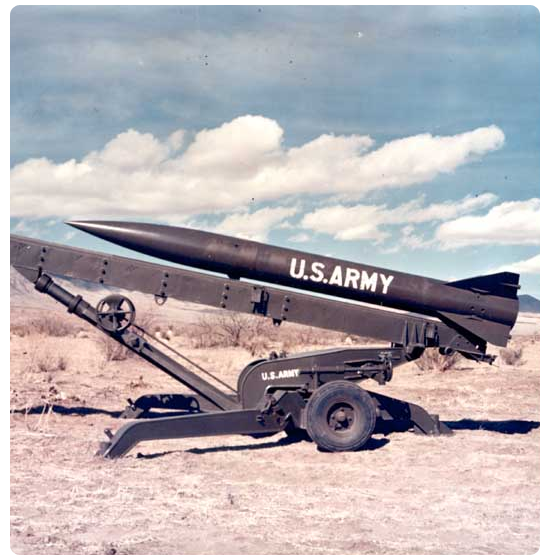
The Little John was an artillery rocket system is service with the US Army during 1950 and 1960. The rocket existed in a nuclear and non-nuclear configuration. The Little John was developed at Redstone Arsenal. The Little John was a spin stabilized artillery rocket with a ballistic trajectory. The Little John was similar to the Honest John and were sometimes deployed together. The Little John was also transported in components and assembled in the field. To stabilize the rocket, a mechanical device will spin the rocket while on the launcher. The missile and the launcher were light enough to be transported by helicopter. The rocket was retired from service in 1970. Over 500 were produced.
Honest John Missile System
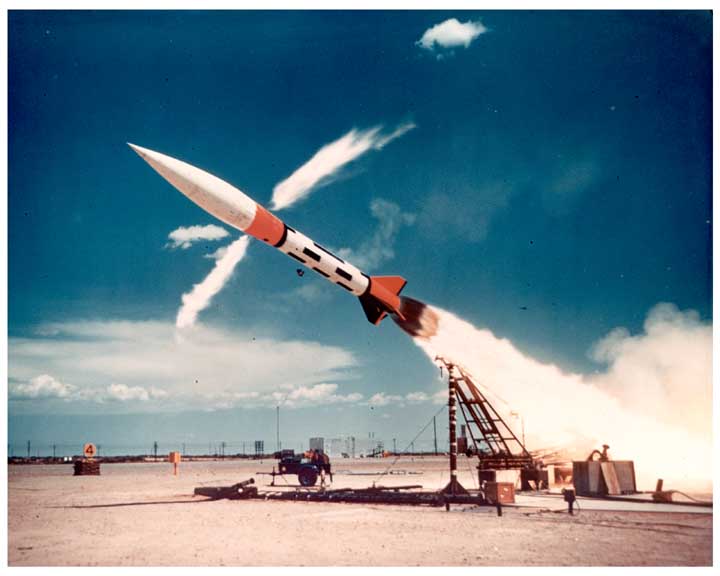
The Honest John was the first nuclear capable rocket to enter service with the US military. The Honest John was developed at Redstone Arsenal and was first tested in 1951. The Honest John is a fin stabilized unguided artillery rocket which was launched from the back of a truck. The Honest John was transported in multiple units which were assembled in the field before launch. Nuclear warheads for the Honest John were of variable yield of up to 20 kilotons. The rocket could also carry a 1,500 pound conventional warhead. The Honest John rocket had a range of about 15 miles and an average area of effect of about 1 square kilometer. The Honest John had a service life greater than any other US ballistic missiles except Minuteman. The system was replaced by the Lance Missile. Over 7,000 were produced. Non nuclear versions of the Honest John rocket were also adopted by military organizations around the world including Belgium, Britain, Canada and Denmark. The Honest John Missile System was withdrawn from service in 1991.
BGM-71 TOW Missile

The BGM-71 is a tube launched, optically tracked, wire guided anti-tank missile. It was originally designed by Hughes Aircraft in the 1960s, but is now produced by Raytheon. The BGM-71 TOW Missile was first introduced into service 1970 and has become one of the most widely used anti-tank missiles. Several versions exist that are adapted for vehicles, helicopters as well as a man-portable version. The BGM TOW has been used in many modern conflicts including Vietnam, the Iran-Iraq War, Afghanistan, Somalia, Yemen and the Ukraine War. Each unit costs about $90,000. The warhead weighs between 4-6 kilograms. The BGM-71 has an operational range of about 3,000 and a speed of about 300 meters per second.
TACMS Missile System

The Army Tactical Missile System is a surface-to-surface missile made by Lockheed Martin. It is designed to be fired from either the tracked M270 MLRS Multiple Launch Rocket System or the wheeled M142 HIMARS High Mobility Artillery Rocket System. Development of the TACMS began in 1980 as a replacement for the Lance Missile. TACMS operate in almost all weather conditions and have a long range. The missile is used to attack surface-to-surface missile batteries, air defense systems, and command and control complexes. The TACMS is designed to provide precision engagement of the enemy throughout the depth of the battlefield beyond ranges of rockets and artillery. TACMS were first used in combat in Operation Desert Storm in 1991 and is currently still in use.
FIM-92 Stinger MANPAD
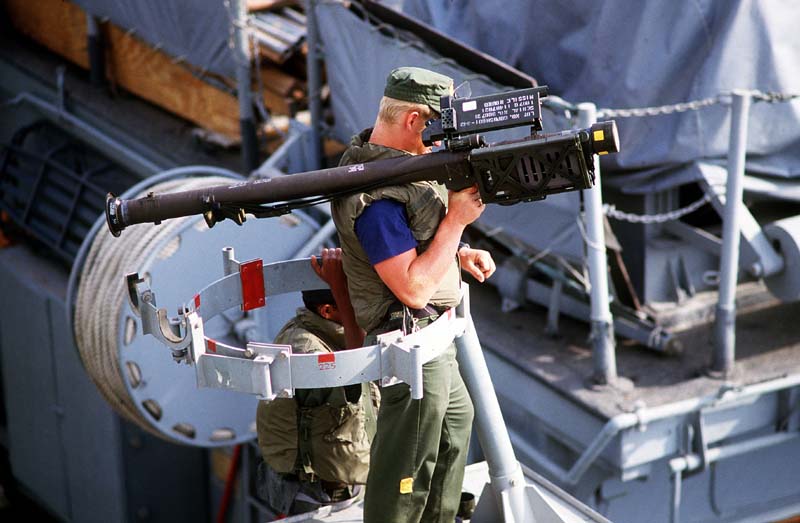
The Stinger is a man portable short range air defense missile designed to protect ground personnel against low flying fixed and rotary wing aircraft. The Stinger is a fire-and-forget missile with quick acquisition targeting and all aspect engagement capability. The Stinger, unlike earlier similar MANPAD weapons can fire at targets head on. Three variants exist. All exist as disposable sealed tubes and require no testing or maintenance. The Stinger has passive homing and has a separate motor for launch and flight. The launcher assembly is re-usable. Stinger missile are also mounted on helicopters and Bradley Fighting Vehicles.
Red Eye Missile MANPAD

The FIM-43 Redeye Anti-Aircraft Missile was the first of an entirely new class of weapons: the MANPAD or Man Portable Air Defense System. The concept of the MANPAD, a post WW2 weapons system, fulfilled the need for a close-in air defense system to protect troops from low-flying aircraft. Although it employs sophisticated technology, it is simple to operate and can be carried anywhere a soldier can carry a rifle. The Redeye is named after its heat seeking infra-red guidance system.
Shillegah Missile

The Shillelagh was an American anti-tank missile designed to be fired from the closed breech of a conventional cannon barrel. The intent of this concept was to provide a light air-transported tank using a light-weight barrel with ammunition effective against heavily armored tanks. It was designed to be fired by the tank-like Sheridan vehicle. The cannon of the Sheridan was rifled and could also fire unguided HEAT rounds. The Shillelagh missile utilized a combustible cartridge case. The combustible cartridge case eliminated the need to handle spent shell casings. The Shillelagh utilizes a 15 lb shaped charge which produces a high-velocity jet of metal formed by the warhead. This characteristic yields great penetration capability. The MGM-51A Shillelagh missile was stabilized by flip-out fins, and controlled by hot gas jet reaction controls. When fired, the gunner had to keep the target in the cross hairs of the telescopic sight. A missile tracker in the gunner's sight kept track of deviations of target versus trajectory of the missile and generated correctional control commands which were transmitted to the guidance system of the missile via an infra-red communication link. The infra-red control link unfortunately could not operate until the missile had traveled a minimum distance of about 800m. This minimum range was slightly greater than the range of the main conventional shells fired by the Sheridan and this resulted in a dead zone, out of reach of either ammunition. The Shillelagh had a maximum range of about 2000 meters.



